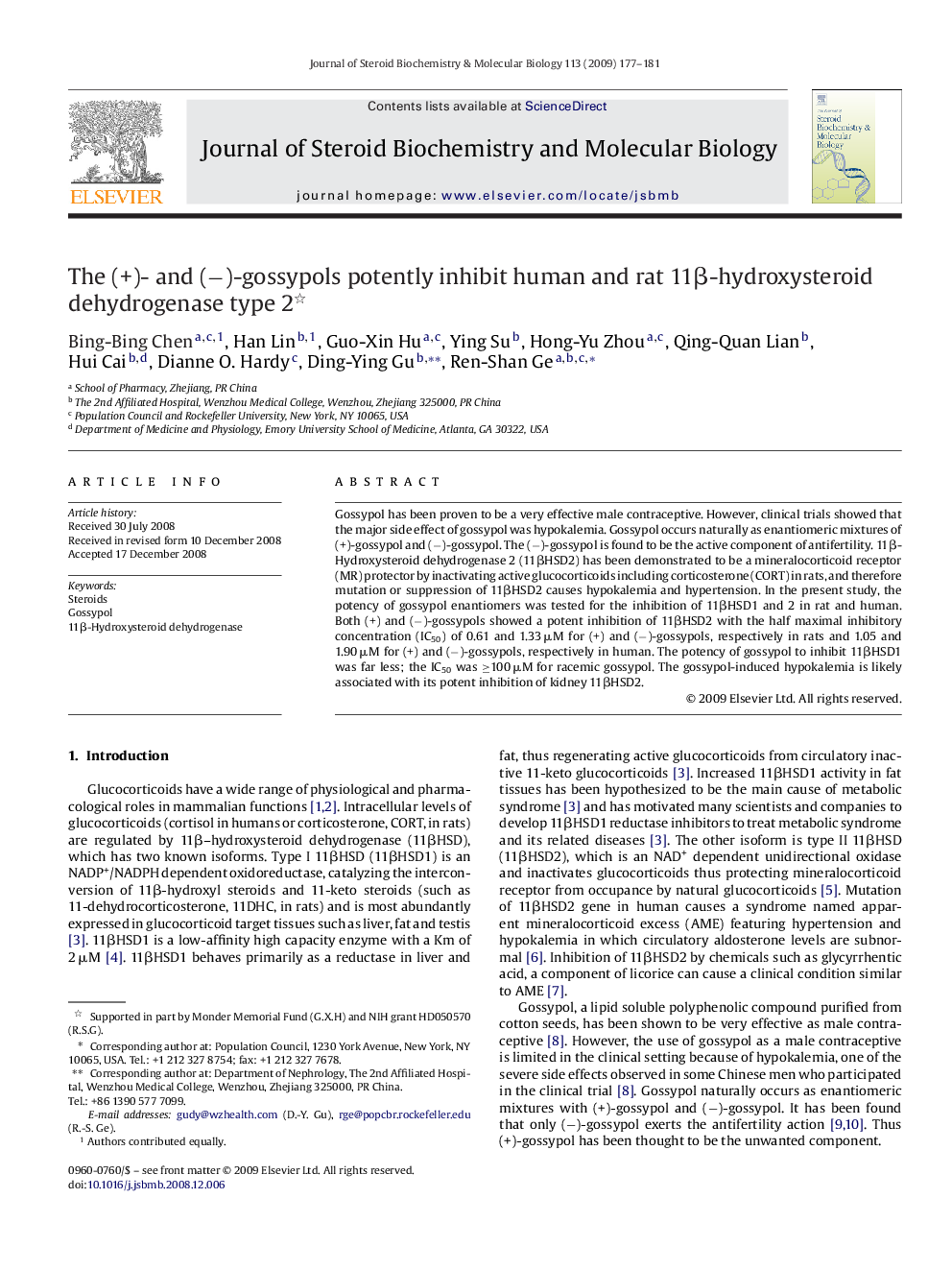| کد مقاله | کد نشریه | سال انتشار | مقاله انگلیسی | نسخه تمام متن |
|---|---|---|---|---|
| 1991904 | 1541060 | 2009 | 5 صفحه PDF | دانلود رایگان |
عنوان انگلیسی مقاله ISI
The (+)- and (â)-gossypols potently inhibit human and rat 11β-hydroxysteroid dehydrogenase type 2
دانلود مقاله + سفارش ترجمه
دانلود مقاله ISI انگلیسی
رایگان برای ایرانیان
موضوعات مرتبط
علوم زیستی و بیوفناوری
بیوشیمی، ژنتیک و زیست شناسی مولکولی
زیست شیمی
پیش نمایش صفحه اول مقاله

چکیده انگلیسی
Gossypol has been proven to be a very effective male contraceptive. However, clinical trials showed that the major side effect of gossypol was hypokalemia. Gossypol occurs naturally as enantiomeric mixtures of (+)-gossypol and (â)-gossypol. The (â)-gossypol is found to be the active component of antifertility. 11β-Hydroxysteroid dehydrogenase 2 (11βHSD2) has been demonstrated to be a mineralocorticoid receptor (MR) protector by inactivating active glucocorticoids including corticosterone (CORT) in rats, and therefore mutation or suppression of 11βHSD2 causes hypokalemia and hypertension. In the present study, the potency of gossypol enantiomers was tested for the inhibition of 11βHSD1 and 2 in rat and human. Both (+) and (â)-gossypols showed a potent inhibition of 11βHSD2 with the half maximal inhibitory concentration (IC50) of 0.61 and 1.33 μM for (+) and (â)-gossypols, respectively in rats and 1.05 and 1.90 μM for (+) and (â)-gossypols, respectively in human. The potency of gossypol to inhibit 11βHSD1 was far less; the IC50 was â¥100 μM for racemic gossypol. The gossypol-induced hypokalemia is likely associated with its potent inhibition of kidney 11βHSD2.
ناشر
Database: Elsevier - ScienceDirect (ساینس دایرکت)
Journal: The Journal of Steroid Biochemistry and Molecular Biology - Volume 113, Issues 3â5, February 2009, Pages 177-181
Journal: The Journal of Steroid Biochemistry and Molecular Biology - Volume 113, Issues 3â5, February 2009, Pages 177-181
نویسندگان
Bing-Bing Chen, Han Lin, Guo-Xin Hu, Ying Su, Hong-Yu Zhou, Qing-Quan Lian, Hui Cai, Dianne O. Hardy, Ding-Ying Gu, Ren-Shan Ge,